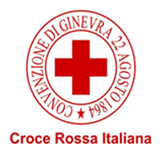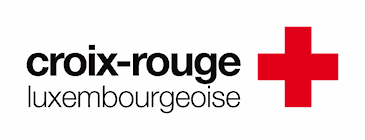Vienna (Austria), 10 July 2020 – The World Wildlife Crime Report 2020 launched today by the United Nations Office on Drugs and Crime (UNODC) emphasizes the threat that wildlife trafficking poses to nature and the biodiversity of the planet. The report highlights the trafficking of some wild species – pangolins, birds, turtles, tigers, bears and many more. When wild animals are poached from their natural habitat, butchered and sold illegally, the potential for transmission of zoonotic diseases – those caused by pathogens that spread from animals to humans – is increased.
Zoonotic diseases represent up to 75 per cent of all emerging infectious diseases and include SARS-CoV-2 that caused the COVID-19 pandemic. The products offered from the trafficked species for human consumption, by definition escape any hygiene or sanitary control: as such, they pose even greater risks of infectious diseases. The report notes that pangolins, which were identified as a potential source of coronaviruses, are the most trafficked wild mammals in the world, with seizures of pangolin scales having increased tenfold between 2014 and 2018.
The report draws heavily on UNODC’s World WISE database, which contains almost 180,000 seizures from 149 countries and territories. The database shows that nearly 6,000 species have been seized between 1999-2019, including not only mammals but reptiles, corals, birds, and fish. It also shows that no single species is responsible for more than 5 per cent of the seizures, no single country was identified as the source of more than 9 per cent of the total number of seized shipments and that suspected traffickers of some 150 nationalities have been identified.
This data underscores the global nature of the issue. Wildlife crime affects all countries through its impacts on biodiversity, human health, security and socio-economic development. Stopping the trafficking in wildlife species is a critical step not just to protect biodiversity and the rule of law, but to help prevent future public health emergencies.
“Transnational organized crime networks are reaping the profits of wildlife crime, but it is the poor who are paying the price,” said UNODC Executive Director Ghada Waly. “To protect people and planet in line with the Sustainable Development Goals, and to build back better from the COVID-19 crisis, we cannot afford to ignore wildlife crime. The 2020 World Wildlife Crime Report can help to keep this threat high on the international agenda and increase support for governments to adopt the necessary legislation, and develop the inter-agency coordination and capacities needed to tackle wildlife crime offences.”
EU Commissioner Jutta Urpilainen thanked UNODC for its work and efforts in preparing the report. “It confirms the need for EU support to the rule of law and the fight against corruption. The EU continues to support actions to end the unsustainable exploitation of nature, including deforestation and illegal wildlife trade. Sustainability is at the heart of the European Green Deal: an inclusive and sustainable transition towards a greener planet and stronger economies with people at the centre. This includes ecosystems and wildlife conservation, essential parts of a thriving wildlife economy with and for local communities,” said Ms Urpilainen.
Ivonne Higuero, Secretary-General of the Convention on International Trade in Endangered Species of Wild Fauna and Flora (CITES) said that “Accurate data is the bedrock of policymaking. And few publications are as insightful as is the 2020 World Wildlife Crime Report. Rooted in the best data available, including that of CITES Parties’ annual illegal trade reports, the report provides governments with a clear picture of the situation and underscores the need to act now to conserve our most valuable species and ecosystems.”
Illicit market for ivory and rhino horn in decline
The report outlines key global wildlife crime trends and analyses markets for illicit rosewood, ivory, rhino horn, pangolin scales, live reptiles, big cats and European eel. It suggests that demand for African ivory and rhino horn is in decline and that the size of the illicit markets for them are smaller than previously suggested. Annual illicit income generated from ivory and rhino horn trafficking between 2016 and 2018 was estimated at US$400 million and US$230 million respectively.
Demand for tropical hardwood timber, on the other hand, has grown significantly in the past two decades, with illegal African rosewood entering some legal supply chains, such as the international wood furniture trade. Seizures of tiger products have also risen in recent years, as has traffickers’ interest in other big cat parts that can be used as substitutes for these products.
Wildlife crime going digital
The report explains that, like many other markets, trade in wildlife and wildlife products have also expanded into the digital sphere. Sales of certain products, like live reptiles and tiger bone products, have shifted to online platforms and encrypted messaging apps as traffickers have found new ways to connect with potential buyers. The online trade is particularly difficult to address due to lack of transparency, inconsistent regulatory frameworks, and limited law enforcement capacities.
Strengthening criminal justice systems
The report further argues the need for stronger criminal justice systems focusing on improving legal frameworks and strengthening the prosecutorial and judicial process. The report illustrates that criminal networks have diversified the resources they exploit and traffic and use the same corrupt networks to move different wildlife products, such as African elephant ivory and pangolin scales, together. To combat these challenges, the report frames the need to improve international cooperation, cross-border investigations and suggests that States make greater efforts to define wildlife crime as a serious crime under the United Nations Convention against Transnational Organized Crime (UNTOC).
***
The World Wildlife Crime Report is available at: https://www.unodc.org/unodc/en/data-and-analysis/wildlife.html
The 2020 World Wildlife Crime Report takes stock of the present wildlife crime situation with a focus on illicit trafficking of specific protected species of wild fauna and flora and provides a broad assessment of the nature and extent of the problem at the global level. It includes a quantitative assessment of markets and trends and a series of in-depth illicit trade case studies. While the first Report in 2016 was UNODC’s initial global assessment of the state of wildlife crime, this second edition is rather an evaluation of trends and changes.
The recorded launch of the World Wildlife Crime Report 2020 can be watched here.








